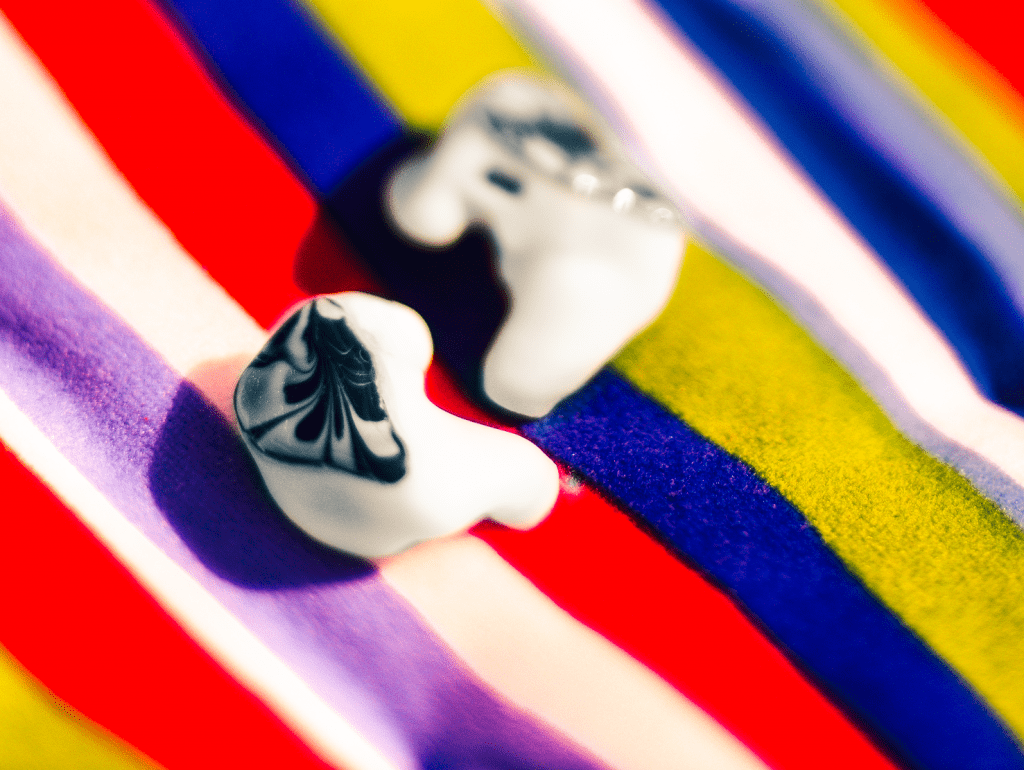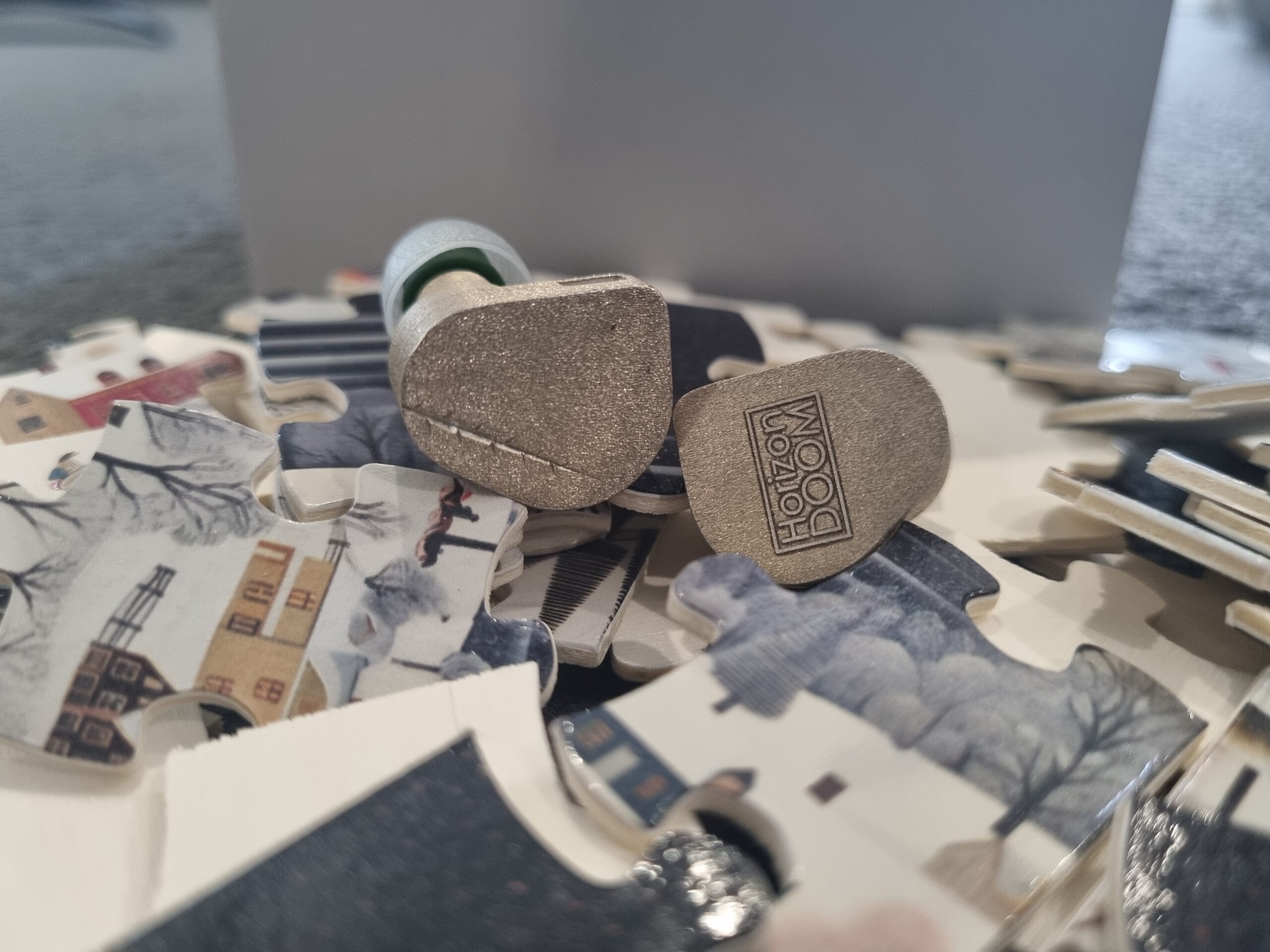‘CustomArt Harmony 8 Pro’ Review: One of two co-flagships from CustomArt steps into the ring
Mon Jun. 1, 2015
By jelt2359
[divider]
Comparisons
Jerry Harvey Audio JH13 Pro FreqPhase ($1099)
The JH13 Pro was my first ever pair of Custom In-Ear Monitors, and I’ve since upgraded it to the FreqPhase option that they offer. The JH13 and the H8P really sound quite different, beginning with the bass. The JH13 has a fun, authoritative bass with stronger midbass than subbass, although both are present in much more generous quantities than on the H8P. The JH13 also has a slightly tighter bass. It loses out- just like basically everyone else- in terms of bass speed, detail and timbre to the H8P, but still does quite well nonetheless in these areas.
The mids on the JH13 Pro have much nicer timbre than the H8P, but do much more poorly in terms of airiness. The two IEMs perform similarly in terms of midrange detail and energy (both performing just ‘above average’), but overall I preferred the mids on the H8P, which also comes away ahead in terms of clarity and evenness.
Comparing the treble between the two is really getting into the two bottom-dwellers for me in this category, but the JH13 comes out clearly worse. Save for pretty good speed, and just slightly better smoothness, the JH13 loses out to the H8P in every category I rate.
Happily, the two posted quite similar scores in their spatial presentation, although they do so in different ways. The JH13 did better in imaging; posting good scores in layering of depth and center image formation, although being a hair’s length poorer in breadth. On the other hand, the soundstage size is significantly smaller on the JH13- in all three dimensions no less; width, depth and height. Consistency of soundstage and airiness are also both poorer on the JH13. Which means basically everything about the soundstage was weaker.
After listing so many differences, I’ve saved perhaps the biggest difference for the end. The H8P is a lean and fit machine with notes that lack much weight; on the other hand the JH13 has beautifully distinct notes that are nicely articulated and convey a sense of wholeness.
Noble Audio Kaiser 10 ($1599)
Overall, the K10 continues to show its strengths in comparison with the H8P, performing extremely well in terms of the component parts of the frequency response: bass, mids and treble. Starting with the bass, the K10 actually stands up admirably well with regards to the ‘magic trinity’ of the H8P- here it is again, bass speed; detail; timbre. Moving on to the H8P’s weaknesses, the K10 bass hits with much more authority and has a more natural decay. Sub-bass is also better, if not by much.
The mids are also much better on the K10; performing significantly above in terms of energy, timbre and detail. Midrange clarity also goes to the K10, although the disparity is not as big since the H8P was already quite capable. All is not bad, though, and the H8P comes out just a little ahead in mids evenness and airiness. We’re talking a bee’s-length, though. Splitting hairs.
Treble is a bit more of a mixed bag, with the two being somewhat opposites. Treble extension, naturalness and clarity are all better on the H8P. On the other hand weaknesses of the H8P, like treble speed, sparkle and smoothness, all do better on the K10, by increasing degrees. The K10 is not the fastest but still comes out ahead in speed; sparkle is clearly better on the K10 (the two are not really that close in this regard); and finally the biggest difference lies in the smoothness- switching from the H8P to the K10 is a bit like going from denim to silk.
But move away from the frequency response to consider the spatial qualities, where the H8P is a standout, and the K10 simply cannot compare. Much like with the JH13, the K10 falls short in every single soundstage category- quality and quantity alike. But unlike the JH13, imaging is clearly poorer on the K10 as well when compared to the H8P, coming in worse in terms of breadth and center image, and equally bad in terms of imaging depth.
Rounding up the comparison, PRaT is very good on the K10 but the H8P maintains its position as best in class; on the other hand balance continues to be unmatched on the K10 despite the H8P acquitting itself well enough. Note articulation, a major weakness on the H8P, comes across as much better on the K10; and finally musical resonance on both is unremarkable, although the K10 is slightly ahead.
1964Ears | Adel A12 ($1999)
These two IEMs have a completely different sound signature- the A12 comes in as a much warmer IEM in comparison to the H8P, due in no small part to the bass. Nobody can accuse the A12 of being bass-lite, whereas the H8P is decidedly and unashamedly not for bassheads. Quality-wise, the A12 bass is just as detailed, although its detail comes in the form of generous helpings of rich, velvety layers of chocolate. This is in stark contrast to the H8P, which achieves a raw and edgy bass, stripped of all frivolousness. Getting to areas of weakness for the H8P, the A12 bass possesses much deeper sub-bass extension- and is in fact the only Balanced Amateur CIEM I own that went toe-to-toe with my Hybrid IEMs (which have Dynamic bass drivers) in this regard. The A12 bass also hits with more authority, but you already knew that, and it decays in a more natural fashion as well. On the other hand, the H8P bass retains its crown as the king of timbre, and also grades out significantly faster in comparison.
Pitting the mids on these two IEMs against one another is a short and sweet affair. The A12 matches (evenness, energy) or betters (everything else) the H8P across the board, with a particularly huge difference in terms of mids timbre. The H8P has mids that sound a bit unnatural; while the A12 comes in at the opposite end of the scale, with tonality that’s almost perfectly on point for my tastes. Nice.
Comparison of the treble is also not a particularly good look for the H8P. The A12 does better in every respect save sparkle. The A12 treble can sound a bit dull sometimes, even when compared to the H8P and its unremarkable treble sparkle. The H8P treble is also lacking in smoothness, and the A12 is in fact only slightly better. At the same time the A12 treble is distinctly faster, and even manages to nudge slightly ahead on areas of strength for the H8P- treble extension, clarity, and naturalness.
Perhaps the most exciting matchup between these two occurs in their spatial presentation, where the A12 takes the fight to the H8P exactly where the latter is strongest, with mixed results. Soundstage size is slightly bigger on the A12, if not by much, although the H8P hits back with better consistency and sound diffusion. Airiness is a standout on both IEMs. Overall, the H8P takes round one: all things considered, a better soundstage. On the other hand… Imaging, wow that imaging. This is where the A12 simply smokes the competition- the H8P is simply the first victim here. Depth, breadth, center. Everything is marvelous. I really think this is the Adel tech working its magic, but then I have no non-Adel A12 to compare to, so what do I know.
Anyway, we finish with some familiar themes. PRaT is better on the H8P, note articulation superior on the A12. Nothing surprising here.
Summary
The H8P is a lean, mean, jabbing machine. Its footwork is like magic: pay attention now, for the bass will come and go before you know it. Micro-detail is also presented in a unique way, bringing to mind that audiophile cliché, ‘detail from everywhere’. But can you get past the slow speed of the treble; the svelte figure cut by the bass; and the thinness of the notes that it plays?
Pros: Super fast PRaT; big, airy and consistent soundstage; amazingly detailed, natural and quick bass
Cons: Slow lingering treble; music comes packaged in thin, unfulfilling notes; bass that brings a knife to a gun fight
Overall Score: 78.0 (Very Good)
In case you missed it, check out the IEMs reviewed in other installments of “Fit for a Bat!” Coming next: IEM number six. Stay tuned!






6 Responses
I haven’t heard it, but from my understanding the treble is laid-back vs. the more “present” treble of the Pro version.
Have you heard the non pro version? Wondering how it compares
I agree with the above poster, best reviews I’ve ever read. Looking forward to the next installment, it can’t come fast enough!
Right, hopefully the signatures are close enough 🙂
Reviews are so valuable for CIEMs because you cannot really try them. Unfortunately most reviews suck. On “the” forum fanboys, haters or first-timers are quick to make or break a model. Professional reviewers rarely speak their mind and end up liking everything. Most write in a cryptic, pseudo-pΩetic style. So thanks for bringing clarity, structure, perspective and honesty at the same place. The community needs more reviews like these!
Thank you! PS, I have the SE5 Ult, not the Ref.
Fantastic review. Your choice of words makes it very clear to understand how they sound.
I have the SE5-ref and K10, can’t wait to read what you think about it.